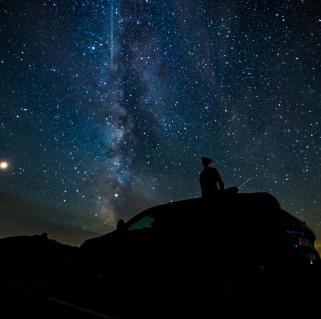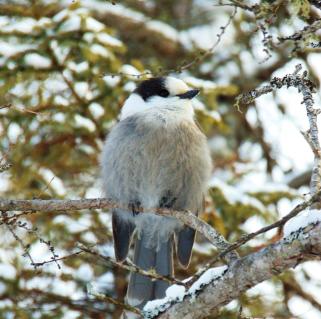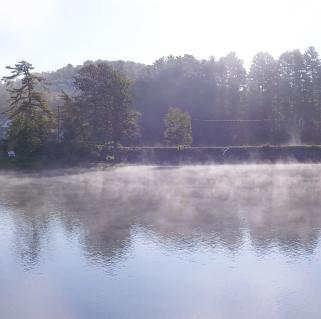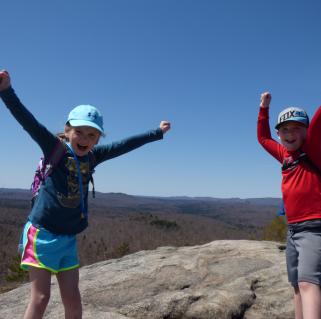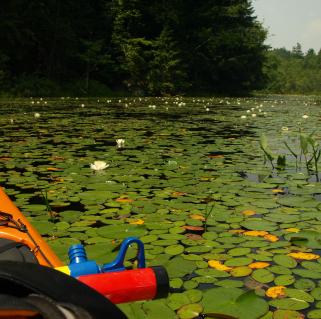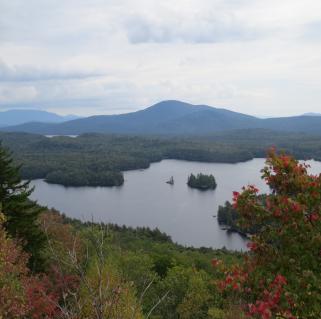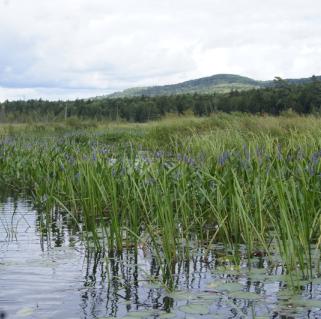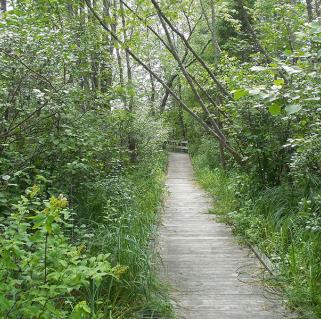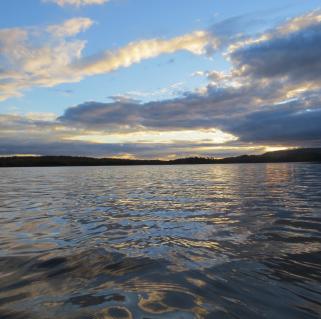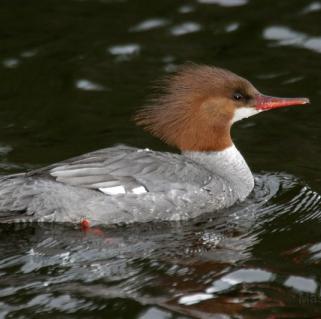Starting at Sabattis
Wren and I were out early the other day, starting our trip at Sabattis Bog. Early mornings are key at Sabattis, as the road can get fairly busy when folks are heading in to paddle Little Tupper Lake. We poked around the edge of the bog along the road and found many of the expected species – Nashville, Yellow-rumped, and Magnolia warblers, Northern Parulas, Alder Flycatchers, Blue-headed Vireos, Common Yellowthroats, Hermit Thrushes, Yellow-bellied Sapsuckers, and good numbers of Lincoln’s Sparrows and Palm Warblers, among others.

Perhaps more exciting than these, we also came across some of the more sought-after boreal species including a few Gray Jays and a lone Black-backed Woodpecker. I also heard a flyover Red Crossbill, and spotted a silent Olive-sided Flycatcher sitting sentinel-like on the tip of a dead snag. The bird flew as quietly as it sat, and after briefly looking away from it I looked back to find it gone.
Paddling Bog Stream
Having covered Sabattis, we drove the short distance to the put-in for Round Lake off Little Tupper Lake. Wren dunked for sticks in the water while I unloaded the boat. Once on the water, rather than go directly to Round Lake, I paddled us across Little Tupper Lake, heading for the east end of the lake to access Bog Stream, spotting first an Osprey and later a Bald Eagle as we crossed the lake.
Bog Stream is a snaking waterway through mixed and boreal habitats, and I paused just after crossing beneath the bridge from Little Tupper Lake for Chestnut-sided Warblers, Alder Flycatchers, Swamp Sparrows, and Common Yellowthroats. The bridge also appeared to be the hub of the local Barn Swallow world, and they were joined by a number of Tree Swallows as well as a couple Chimney Swifts and an Eastern Kingbird, the latter of which hawked insects from the nearby trees.
We followed the water further upstream where, after a few hundred meters, we reached a beaver dam. I had just passed a dam on a side channel, but this dam offered no route around it so we got out of the boat and lifted the canoe over it to continue. A stone’s throw further on we reached another dam, this one much higher and again with no route around it.
I debated my options. I enjoy the exploration of paddling wild streams, but I didn’t care to be lifting over dams all morning either. And so I decided to turn around, once again lifting over the dam we had already crossed, and we retraced our route to paddle the outlet to Round Lake instead. There’s plenty to see there without the effort of beaver dams.
Round Lake
We were soon back near the put-in – and Wren’s excited nose-in-the-air posture seemed to recognize this (perhaps she thought she would be free from the boat soon) — but rather than heading to the car, we paddled out toward Round Lake. Wren laid back down in the boat, seemingly disappointed at this change in fate, and quite disinterested in the Spotted Sandpiper which I soon added to our list of birds for the day. I also spotted a flyover Osprey, Broad-winged Hawk, Turkey Vulture, and a squadron of Barn and Tree swallows which ebbed and flowed overhead presumably in response to the availability of insects.

A Belted Kingfisher likewise came and went – skirting along the shoreline in search of minnows and tadpoles. As we rounded bends in the stream we began to repeatedly spook a small cluster of Wood Ducks that were trying to stay ahead of us. The ducks would fly just far enough away to put us out of sight, but as we made the next bend they would take flight again, once again landing ahead of us until they tired of the game and took off for good. We also continued to find warblers and other songbirds as we went – many the same species which we had found previously – and I stopped now and then to see if I could get a look at a Northern Parula here or a Cedar Waxwing there. The boggy habitat along the channel also attracts boreal birds, and I noted Palm Warblers and a Gray Jay as a result.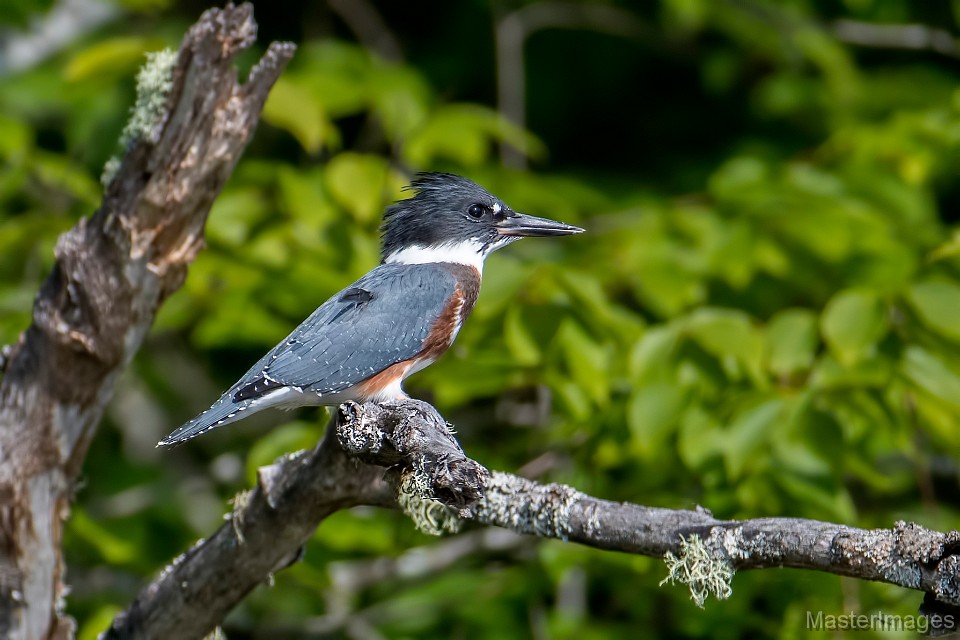
After her disappointment that we didn’t get out of the boat at the take-out, Wren dozed and watched the shoreline like usual, but by the time we began to follow the outline of Round Lake itself, she was becoming a touch antsy – switching her position restlessly with an occasional groan. Our paddling plans had been changed by the beaver dams, after all, and we had been on the water for a while.
So after skirting the boggy edge of the lake we looped back to the small island which sits near the opening to the outlet and we got out to stretch our legs. Wren went about happily wading in the shallows and gulping down water while I hung out in the shade on the warm and sunny day, and listened to a few Red-breasted Nuthatches and a Pine Warbler.
Wren would have preferred not to get back into the boat but it was necessary if we were to get back to the car and find some lunch, so we loaded up – after one more swim for Wren – and wound our way back through the channel to the take-out. From there we drove to the DEC headquarters on Little Tupper Lake where I enjoyed a shady lunch while looking over some maps as Wren played on the beach – asking me for an occasional snack between bouts of racing into the water after sticks. Refreshed and rejuvenated, we headed off for our next adventure.
Late summer and early fall offer excellent paddling and birding across the region. We're happy to help you plan your trip — visit our lodging and dining pages for great suggestions.


